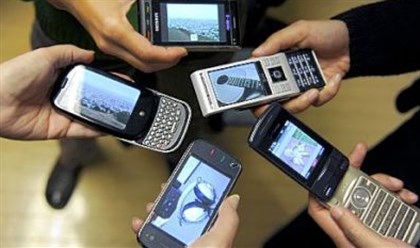A study by Children’s Hospital of Pittsburgh of UPMC that's being released today provides the first solid research into cyberdating abuse among teens. Most commonly, victims reported that abusive partners were using mobile apps, texting and other social networks to repeatedly contact them to see where they were and whom they were with.
Texting and “sexting,” sending sexually explicit messages via mobile phone, are firmly entrenched in the high school dating scene these days, but until now little solid data has existed on to what extent these social media connections have been misused to control, harass, threaten or stalk.
A study being released today provides the first solid research into cyberdating abuse, and the results are startling: Two in five teens surveyed had experienced cyberdating abuse in the context of a dating relationship in the past three months.
Thirty percent of them said they were involved in sexting, and of that group, 33 percent of females reported being asked to text photographs of themselves; 18 percent of young men were asked to do so.
“ ‘Sexting’ is the new norm,” said Rebecca Dick, lead author of the study by Children’s Hospital of Pittsburgh of UPMC. It appears online today in the journal Pediatrics, but that activity is not considered cyberdating abuse based on the scale that researchers use, she added.
“Texting abuse is something we don’t know a lot about in the existing literature,” said Ms. Dick, a clinical research coordinator at the Division of Adolescent and Young Adult Medicine at Children’s.
The study is the first clinically based look at cyberdating abuse among young people who are using school-based health services, added senior investigator Elizabeth Miller, chief of the Division of Adolescent and Young Adult Medicine at Children’s.
“What surprised me about this study was the extent to which cyberdating overlaps with sexual and physical violence in dating relationships and even outside of them,” she said.
Cyberdating abuse has been defined in other studies and in this one as actions that “include your partner checking you where you are, putting you down, making you do things you didn’t want to do,” Dr. Miller said.
The study of teens ages 14 to 19 was conducted at eight school-based health centers, all in California, during the 2012-13 school year, assessing them for cyberdating abuse, adolescent relationship abuse, sexual behavior and care-seeking for sexual and reproductive health.
In California, many schools have in-school health centers, where students receive confidential clinical health services, including annual checkups, sports physicals and birth control.
Dr. Miller said she is trying to start a similar school-based health center in the Pittsburgh region.
Most commonly, victims reported that abusive partners were using mobile apps, texting and other social networks to repeatedly contact them to see where they were and whom they were with.
The research also confirmed what previous research has shown: Teens exposed to cyberdating abuse were more likely to also experience physical and sexual dating abuse: being slapped, choked or forced to have sex by a dating partner.
Those teens also were more likely to experience non-partner sexual assault and used contraceptives less often.
The researchers asked randomly selected students who had received some kind of care in the school-based center to take a survey on a laptop computer, being careful not to limit the question to one type of communication, such as Twitter or Facebook, given that teens are constantly moving to new ways of contacting each other.
“We wanted to make sure we were capturing the type of technology that they’re using, so we asked how often did a partner engage in an activity using mobile apps, texting, social networks. We didn’t want to leave out some app we didn’t know about,” Dr. Miller said.
“These findings underscore that cyberdating abuse is an emerging concern,” said Dr. Miller, an associate professor of pediatrics at the University of Pittsburgh School of Medicine.
“We need to support prevention efforts that increase education about the many different forms of abuse in adolescent relationships and to encourage parents, teachers, coaches and others to talk to young people about what healthy relationships look like,” she said.
Dr. Miller said she hoped the data would alert pediatricians and other health care professionals to take cyberdating abuse seriously and actively ask teens whether they are being monitored, threatened or sexually coerced by their partner using technology-based communication.
“When we are showing young people what controlling and abusive behaviors look like, we need to include the use of social media,” she said. “Many young people consider this normative behavior instead of letting them know it’s truly not OK.”



